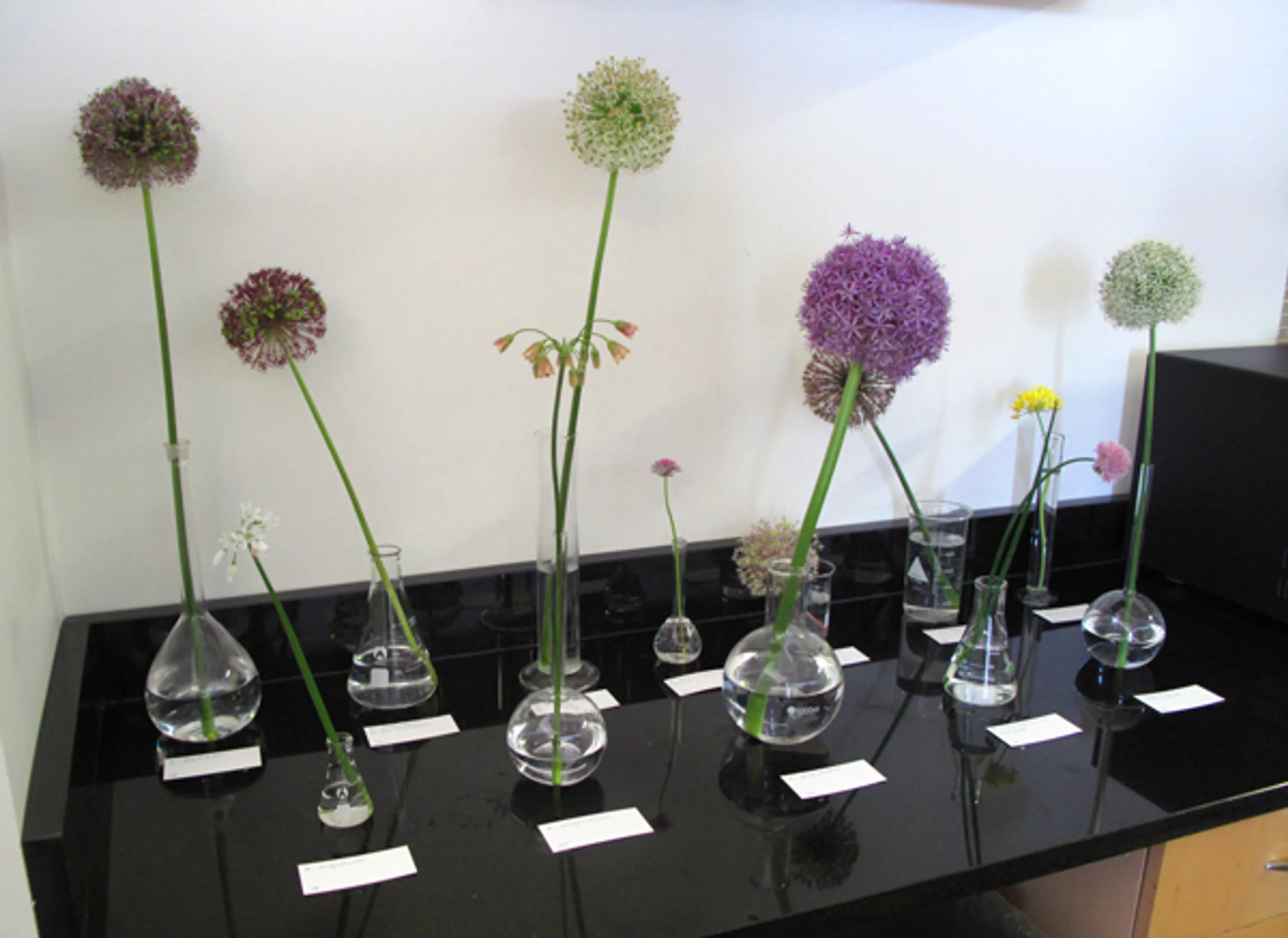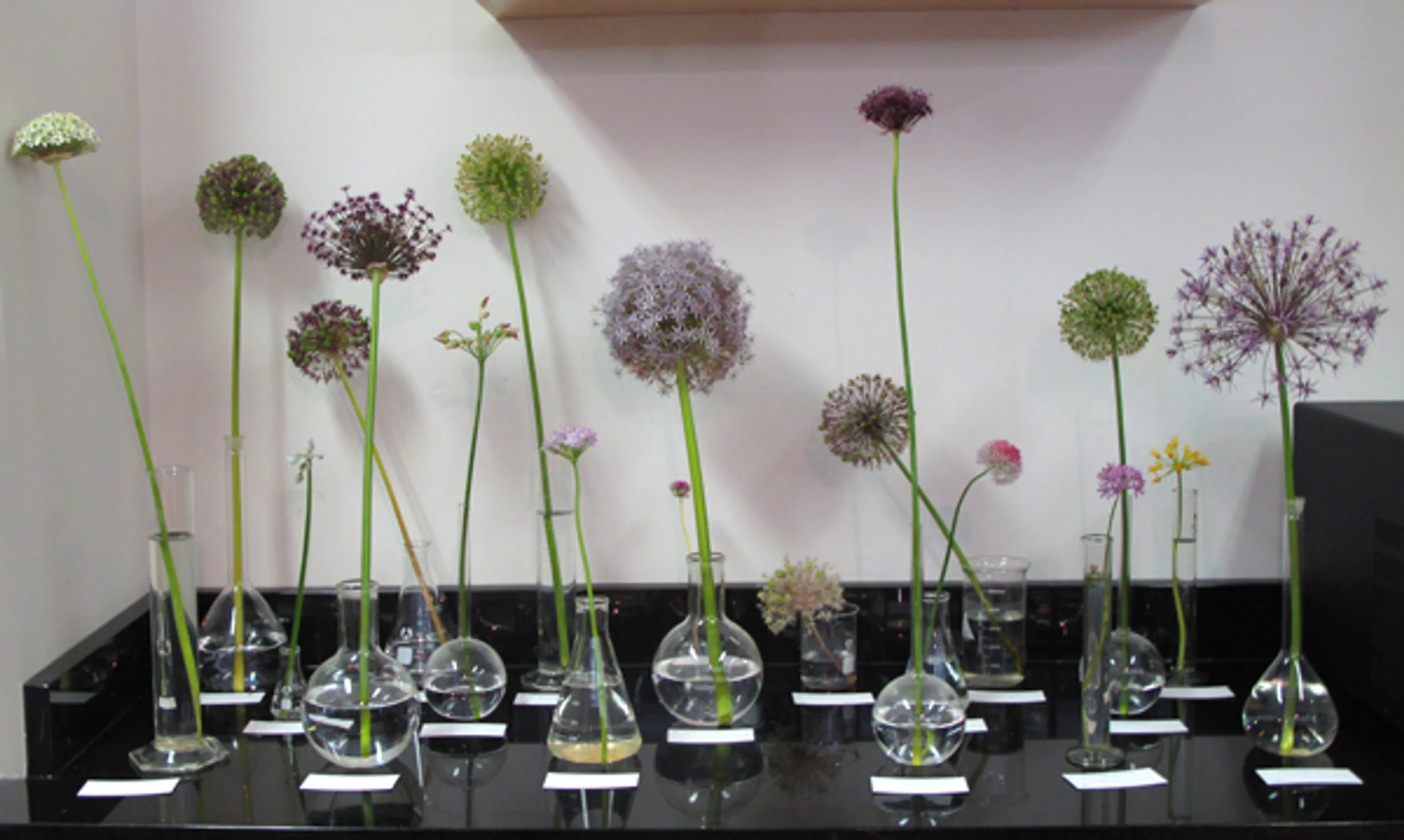Alliums are showing up all over the city this month – those Dr. Seuss-like blooms that perch on bare stems. They’re a member of the onion genus and their graphic form makes them a dramatic spring and summer bloom. (See an earlier post for an image of them in one of our garden designs.)
Last year, I got Allium-obsessed. I ordered all the varieties from my favorite catalog, planted them in a willing recipient’s yard (thanks Grandma), and photographed their growth from bulb to bloom.









